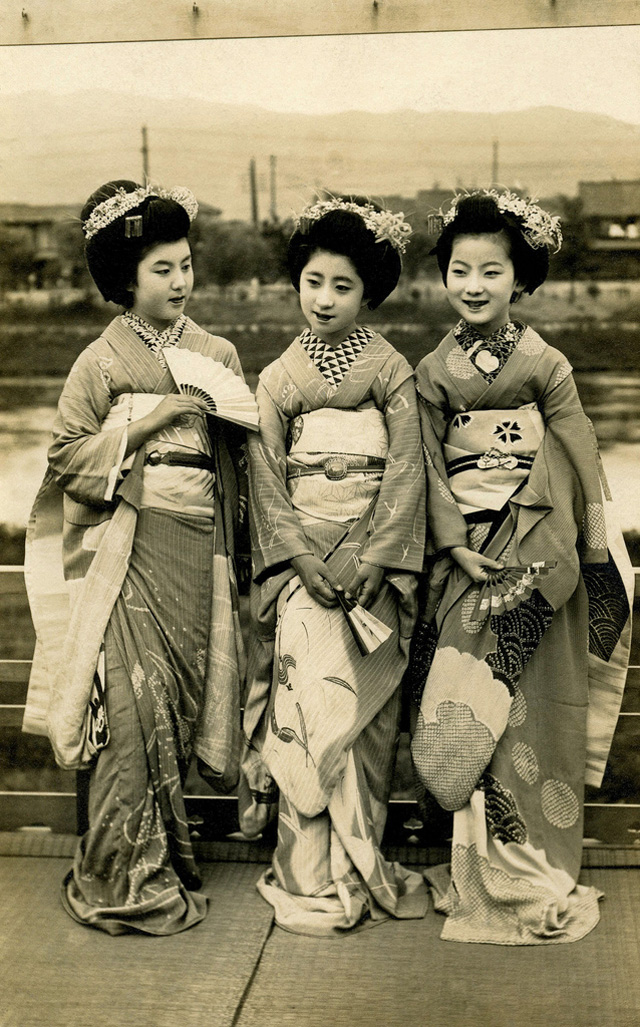
Japanese Girls in the Taisho Period 37 Beautiful Vintage Photos of Maikos and Geikos in Kyoto
If you're interested in learning more about 1920's Japanese women's fashion as impacted by the West, I would suggest reading Miriam Silverberg's article, "The Modern Girl as Militant." It's a really great, clear explanation of the hype about hedonist, flapper-type women being the symbols of all that was wrong with modernity. 😉

1920s • Geta and Zori Shop OLD PHOTOS of JAPAN
Later, from around 1907, there was a trend for fashion inspired by Japanese style, including details of the kimono. Evening Coat (1909 winter). and gold coloring is reminiscent of Japanese lacquerware. In the 1920s, European interest in exotic countries extended to include Russia, Egypt, South America, China, and Japan, and the couturière.
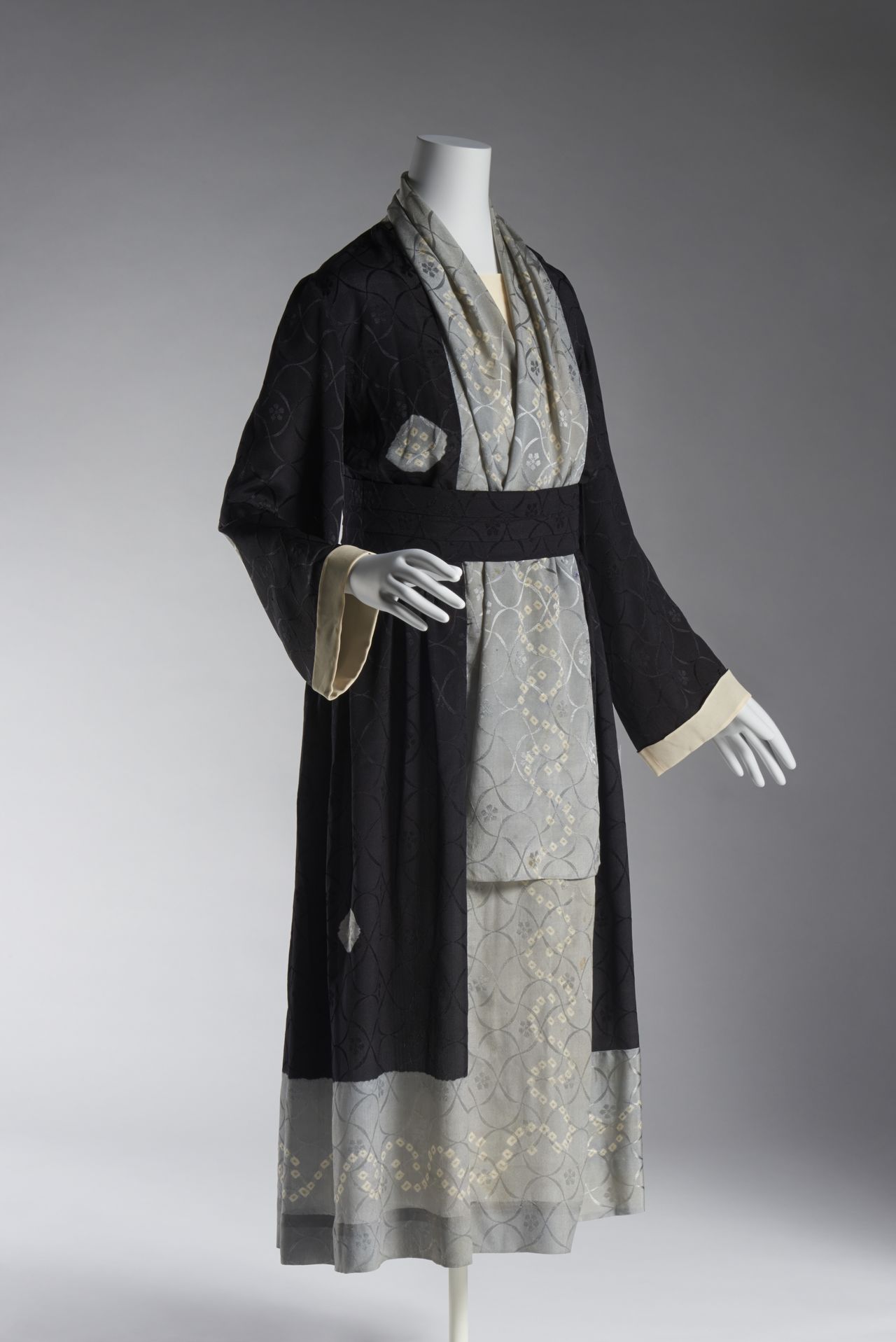
How the Kimono has Influenced the World of Fashion
The Taishō era (大正時代, Taishō jidai), [taiɕoː dʑidai] ⓘ was a period in the history of Japan dating from 30 July 1912 to 25 December 1926, coinciding with the reign of Emperor Taishō. The new emperor was a sickly man, which prompted the shift in political power from the old oligarchic group of elder statesmen (or genrō) to the Imperial Diet of Japan and the democratic parties.

Ella Northedge Japanese Influence // 1920s
Join us on a visual journey through the world of Japanese fashion, showcasing statements from ancient kimono styles to present Lolita street streaks.. Eastern and western mix of cloche hat and kimono jacket; 1920s Japan slim dress style. These styles involved glamorous gowns, dresses, and robes with slim lines and a vertical draping..

Pretty Mogas in the 1920s Interesting Vintage Photos That Show Japanese Women Fashion in the
Those are definitely some staple items, but there's a lot more to Japanese fashion than you can imagine. Let's take a look at some major points of fashion in Japan.. Meiji/Taisho (mid-1800s to 1920s) During the Meiji era, Western culture came in and changed a lot in Japan, including fashion. Folks still wore kimonos but started to wear.
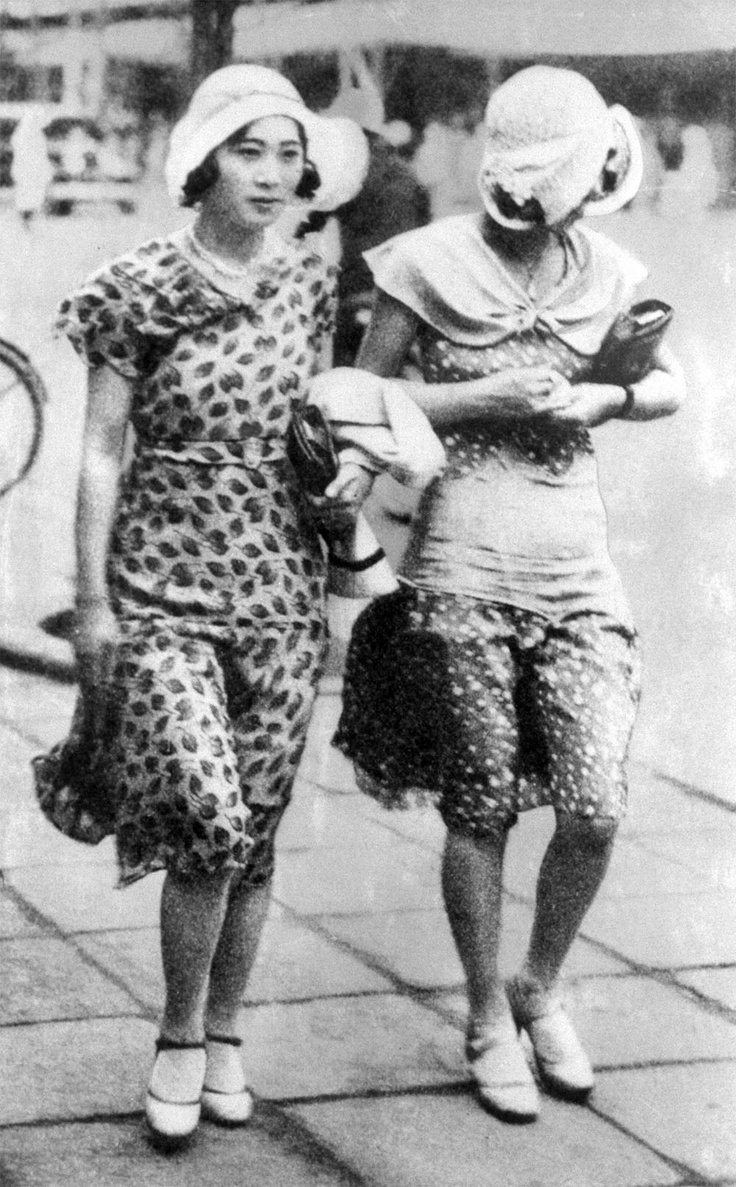
Japanese fashion Influences In 20th century Western Fashion Blue17
Kimono fabric (credit: Alamy) From geisha gown to 21st-Century fashion statement, the kimono is a quintessentially Japanese garment entrenched in symbolism
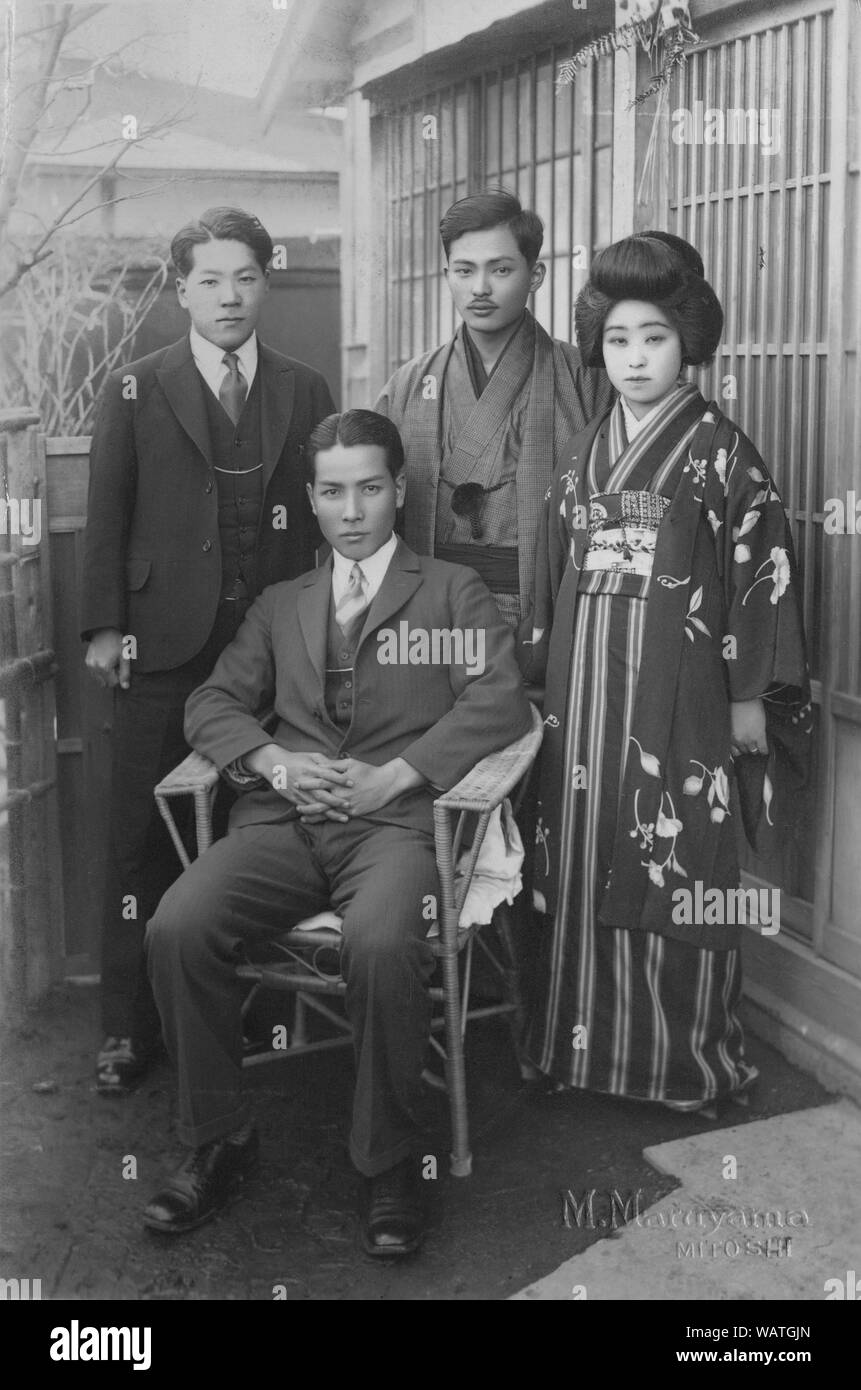
[ 1920s Japan Three Japanese Man and a Woman ] — Group Portrait of four young Japanese with
When thinking of Japanese fashion in 2021, you might imagine Harajuku lolita dresses, Shibuya's cool streetwear or the luxury brands of Ginza.. The West and the East began to share trends and by the end of the 1920s popular women's fashion had become similar across the globe, favoring a glamorous slim line with vertical draping in gowns.

Japanese Women Fashion in the Westernized Era Pretty Mogas in the 1920s
A. s womenswear valued simplicity in the 1920s so, too, did menswear.. Men moved away from starched collars and formal three-piece suits during the day. Instead, they adopted soft collars and one- or two-button suit jackets often worn without a waistcoat as seen in the different styles shown on the fashion plate in figure 1.
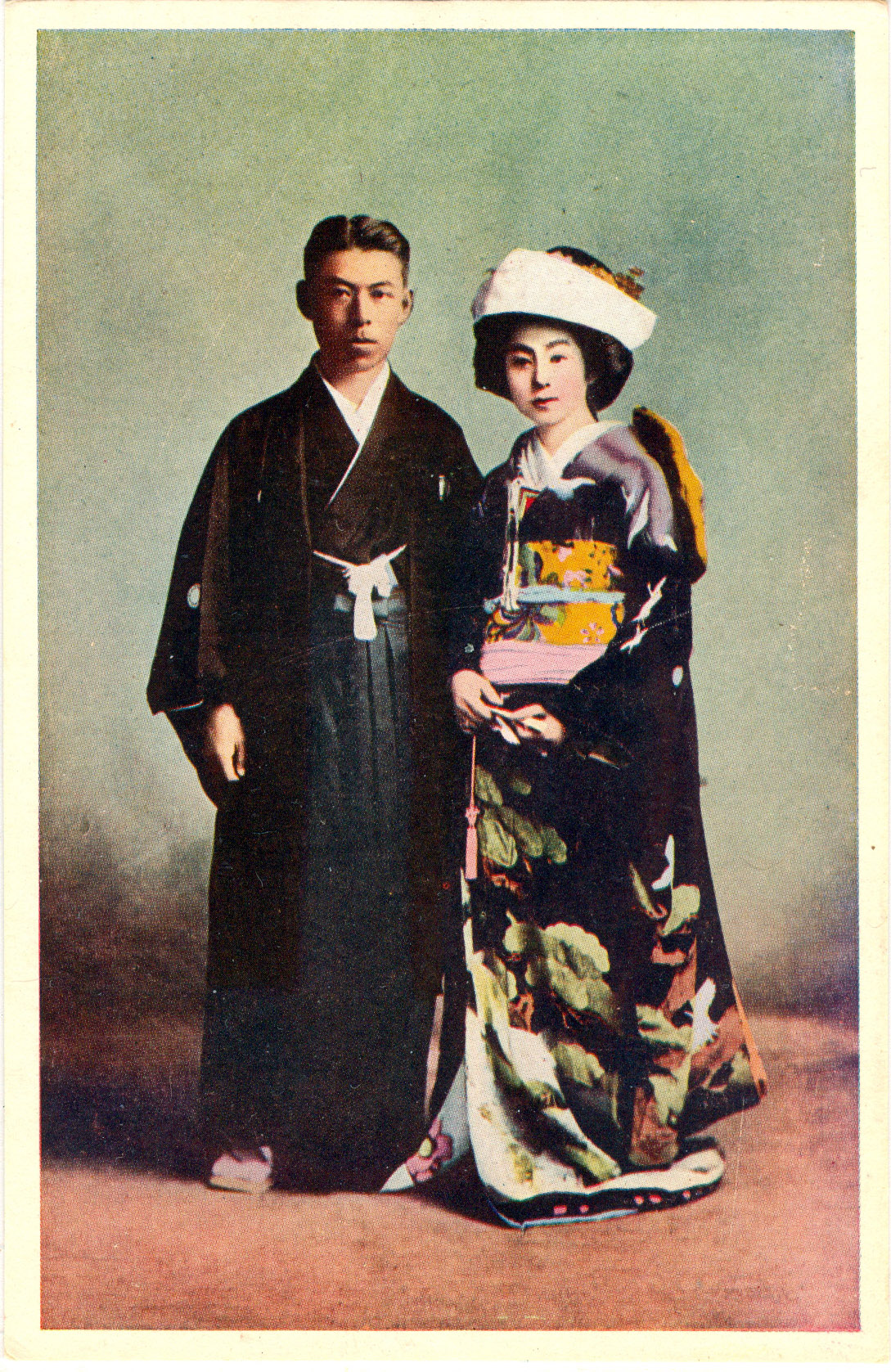
Japanese wedding fashion, c. 1920. Old Tokyo
1920s fashion wasn't just about flappers and fringed dresses. Traditional designs from China and Japan had a big influence on Twenties style with trends like kimino-style coats and robes and richly embroidered fabrics becoming popular. Here are some of my favourite Chinese and Eastern-inspired vintage. Aren't they fab

1920s fashion in Japan. Japan, Historical japan, Japan photo
The Emergence of the Modern Woman in Japan The 1920s saw the advent of a new artistic movement, Japanese modernism, during which women were emancipated from their traditional role.. and towards consumption and fashion at the start of the 20th century. Unfortunately, Fumie Taniguchi's career did not last. Forced to move to the countryside.

Through the French eye of design 1920's JAPANESE STYLE
Fashion movements in Japan during the 1920s and 1930s. During the 1920s and 1930s, Japan experienced a significant shift in fashion influenced by both Western styles and traditional Japanese aesthetics. One prominent fashion movement during this time was the "Moga" or "Modern Girl" trend, which emerged as a symbol of women's.
A Japanese fashion model, 1920s. r/OldSchoolCool
Traditional Japanese fashion represents a long-standing history of traditional culture, encompassing colour palettes developed in the Heian period, silhouettes adopted from Tang dynasty clothing and cultural traditions,. and school uniform for boys, and between 1920 and 1930,.

Vintage Japanese Maikos and Geikos Girls (Taisho Period 1910s1920s) MONOVISIONS Black
Modan — La ville, le corps et le genre dans le Japon de l'entre-deux-guerres ('Modan — The City, the Body and Gender in Interwar Japan'), an ensemble publication edited by Sandra Schaal, draws on various contributions from Japan specialists to explore how, between the second half of the 1920s and the early 1930s, Japanese modernism.

Pretty Mogas in the 1920s Interesting Vintage Photos That Show Japanese Women Fashion in the
See also: Changing fashion (Western dress), c. 1910. "Towards the end of Meiji era and the beginning of Taisho era, due to the influences from foreign countries, the mixture of Japanese culture and western culture was formed. "The uniform school boys wore was called gakuran. It has a hat, a black top with a stand-up

Japanese+moga+girls+in+the+1920s+28929.jpg 595×1,600 pixels Japanese fashion women, Japanese
Oct 2, 2019 - Explore Nancy Andrews's board "Japanese clothing 1920s" on Pinterest. See more ideas about vintage photos, historical fashion, japan fashion.

20s Fashion, Fashion History, Asian Fashion, Vintage Fashion, Fashion Bags, Japanese Beauty
A woodblock print by Yōshū Chikanobu showing Japanese women in Western-style clothes, hats, and shoes (yōfuku)Japanese clothing during the Meiji period (1867-1912) saw a marked change from the preceding Edo period (1603-1867), following the final years of the Tokugawa shogunate between 1853 and 1867, the Convention of Kanagawa in 1854 - which, led by Matthew C. Perry, forcibly opened.